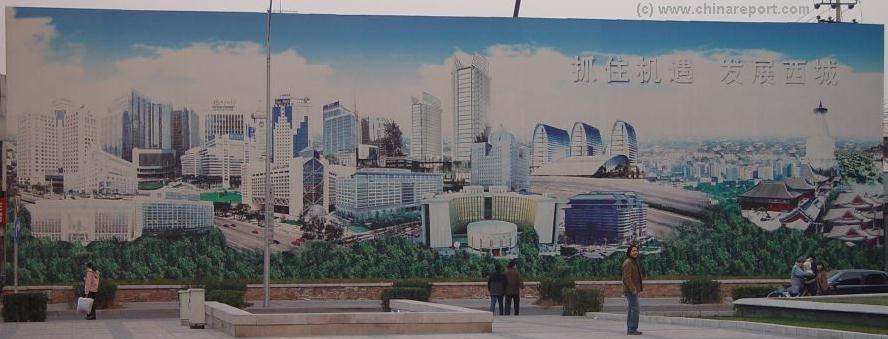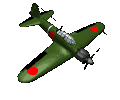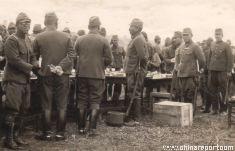Read More of the Early History of Beijing in:
Beijing City from the Fall of the Qing Dynasty to the Japanese Occupation (1911 AD - 1937 AD)
Beijing's Japanese Occupation - 1937 AD - 1945 AD
The City of Beijing fell under Japanese occupation shortly after the Marco Polo Bridge-incident in summer of 1937 AD and stayed under Japanese occupation for nearly 8 years until the Japanese Capitulation in August of 1945 AD.
Not much is published in foreign languages on the actual time of the Japanese Occupation of the City, however the Marco Polo Bridge-Incident, which officially ignited the Sino-Japanese War (that had in fact started years earlier) is widely described in a multitude of sources.
The Marco Polo Bridge Incident Day is nationally remembered as the start of a long awaited National Front and War against the slow strangulation of China by Japan.
Essentially, the whole affair was a pretext to help further Japanese Ambitions for China, and in fact- it was an intricate part of the larger scheme of Germany and Japan to overwhelm the Asian Nations from both sides -Germany taking on Russia, and Japan claiming China, to meet up in Mongolia- and dominate the world. It was the so-called Axis of Evil. The Japanese invoked a tried and tested strategy, they simply made impossible demands on the opposing party. If these were not met, it would result in open warfare, which was the Japanese Basic Plan all along.
The case of the Marco Polo Bridge started in July of 1937, the Japanese invoked one of the provisions of the Boxer Protocols established in the aftermath of the Boxer War in 1901 AD, which gave a multitude of rights to the victorious foreign powers and thus allowed Japan and other countries to station troops east of Beijing. Before the Japanese never used their rights, fearing the reactions of other colonial nations who wouldn't have tolerated Japanese control over railways lines leading to the Capital. However by 1937 AD Japanese confidence had moved far beyond that.
They held military training exercises near Peiping and, claiming that a soldier was missing, demanded the right to enter the small Walled City of Wanping, a south-western Gateway to Beijing. The Chinese Garrison at Wanping however bluntly refused, after which full war broke out. As can be read on the pages dedicated to Wanping and Marco Polo Bridge, Japanese aircraft bombarded the city and occupied it on July the 8Th of 1937 AD, after which the City of Beijing fell quickly on the 29Th of July. The Garrisson defending the Northern Capital itself had fled overnight, leaving room for the Japanese to take control. A Large and often visited National Memorial Site and Monument are located due East of Wanping Village, and a Educative Trip to Wanping is on many local school iteneraries.
As for the 8 year period of Japanese occupation, in General it it is said the War in China was the dirtiest, most brutal and most barbaric of all War Fronts in the Asian Theatre. Japanese war crimes were abundant and have been described by many.
As for the facts on the City of Beijing however, it is generally accepted that the Japanese Rule of the City was generally softhanded, since the City had fallen without resistance and some of its citizens even accepted the occupation as a way to revive the fallen city economy. Many held jobs with Japanese Companies. Anyone opposed had fled into the Inner provinces. Thus, although the Japanese installed a Brutal Military dictatorship, local Military Administrators went out of their way not to offend the City and its inhabitants, thereby avoiding the possibility of creating new enemies and stirring up a revolt.
Although this may be held to be true in a general sense, the Japanese Occupation of Beijing did leave lasting scars.
Among Japanese Strategies to humiliate the Chinese Nation and break the peoples will to fight (as had been done in Korea) was a policy to attack and destroy China's Institutes of higher learning, and where possible imprison or execute high scholars. Among things, Nankai University in Tianjin was bombed several times by Japanese Aircraft and after the Japanese had established control over the City, the remainders of the University were set ablaze using Kerosine.
For the City of Beijing this aggressive policy meant the downfall of its recently opened and proud Institute, the Peking University, former Station of Mao Zedong and many other founders of the communist movement. According to well informed sources, Peking University was initially looted by local citizens during the change of power in the City and ensuing days of chaos. Later, the academic buildings near Wusi Dajie' - May the 4th Avenue, (Due East of Jingshan) were converted into a number of bars and brothels, plus stables for the use of Japanese Troops. The deanery of the University was converted into a troop barracks, whereas the sanitarium was converted into a hospital for the stationed Japanese Troops. Thus, it was the end of the famous Beijing University, the intellectual heart of the City.
In March of 1946 Frank Bagnall Bessac, who had earlier been stationed in Kunming Office of Strategic Services (OSS), appeared in Beijing at the Strategic Services Unit (SSU) of the Army. This Office, later the CIA Headquarters in Beijing was situated somewhere in the north of the ancient Walled City of the Capital Beijing in a 19th Century Chinese "Mandarin Palace".
Although Besnack is known for entirely other historic contributions and he is but one of may Americans and other foreigners to live in Beijing for some time, he leaves relevant and interesting notes and writings about his experiences living in- and observing the Beijing Hutong and every day scenes.
Some four years after the defeat of Japan and the end of World War 2 followed by a deadly Civil War, in march of the year 1949 AD the victorious Communist Party Armies marched into the City to "liberate" it. The occasion was celebrated with the first Grand Military Review of the Peoples Liberation Army, now a rare but steady tradition occurring every 10 years in TiananMen Square.
After Chongqing had been the wartime Capital, the communist party of China, originally the left wing of the KuoMinTang, established their dominance over all of China (except the island of Taiwan which claims to be the real China).





